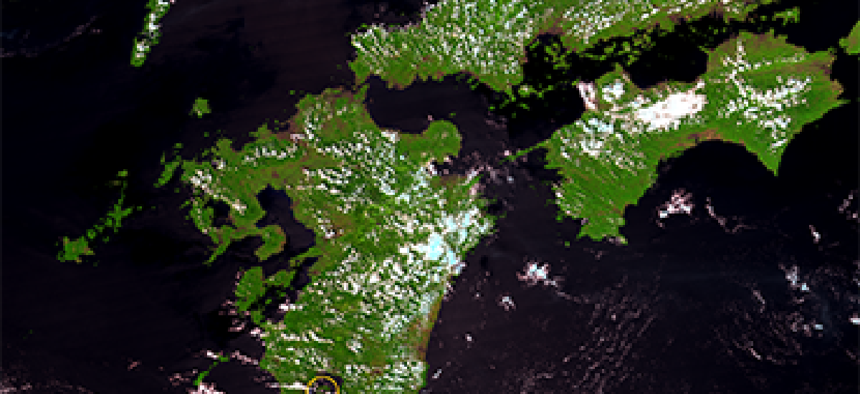Satellite predicts eruption

A NOAA weather satellite detected the eruption of a volcano in Japan 14 hours before it happened.

Mount Sakurajima, photographed by NOAA's Suomi NPP satellite. (NOAA image)
One of the National Oceanic and Atmospheric Administration's satellites detected the Aug. 18 eruption of Japan's Mount Sakurajima 14 hours before it occurred, according to a statement from the weather agency.
The satellite – the Suomi National Polar-orbiting Partnership (NPP) – pinpointed heat from the volcano while on one of its 14 daily orbits around the Earth using its Visible Infrared Imaging Radiometer Suite (VIIRS) sensor. Half a day after the satellite detected the thermal buildup, the volcano erupted, sending an ash plume three miles into the air.
Technically speaking, Suomi NPP is the first in the government's $13 billion next-generation Joint Polar Satellite System (JPSS) fleet. It's really just a converted demonstration satellite launched in 2011 in hopes of mitigating a gap in polar-orbiting satellite coverage.

The Visible Infrared Imaging Radiometer Suite sensor that allowed the satellite to predict the volcanic eruption.
While its sibling satellites – the first of which will not be operational until 2017 – will have far more powerful technical capabilities and instrumentation, detecting a volcanic eruption before it happens is proof that Suomi NPP has some cool features of its own.
"VIIRS continues to show new and remarkable capabilities that will enable scientists to better understand the Earth – from the land to the highest levels of the atmosphere," said Dr. Chris Elvidge, head of the Earth Observation Group of NOAA's National Geophysical Data Center in Boulder, Colo.
VIIRS will be included in the JPSS-1 and JPSS-2, which are expected to be operational in 2017 and 2022, respectively. JPSS represents the next generation of polar-orbiting satellites that will have an increased role in weather prediction.
Note: This story was updated on Aug. 26 to correct projected date of operation for JPSS-2.






